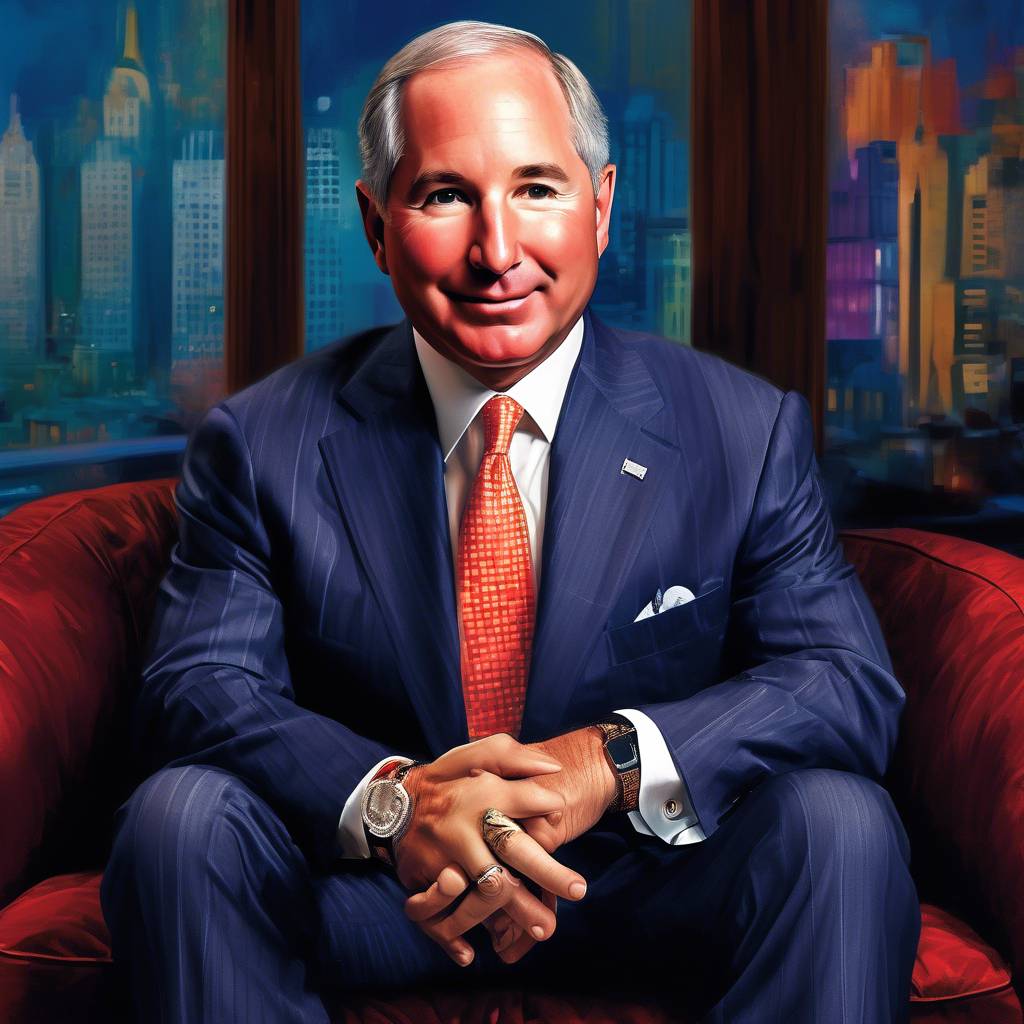Steve Schwarzman, the founder and CEO of Blackstone, has always had a philosophy of going big. Despite Blackstone surpassing $1 trillion in assets, Schwarzman remains expansive and ambitious. Growing up in a suburb of Philadelphia, Schwarzman started working early on, helping out at his father’s fabric store and later running his own lawn mowing business at the age of 14. His drive to succeed started at a young age, and he always pushed for expansion, even suggesting to his father to take their successful fabric store national. Schwarzman’s father, however, was content with their current situation and did not see the need for further expansion.
After attending Yale University, Schwarzman made up for his father’s lack of ambition by founding Blackstone in 1985 with the late Pete Peterson. Today, Blackstone is the world’s largest alternative asset manager with over $1 trillion in assets. Schwarzman’s net worth is estimated at $39 billion, and the firm has produced several billionaires, including current president Jonathan Gray. While Blackstone initially started as a traditional leveraged buyout operation, it has evolved into a buy-and-build firm with innovative financing techniques. Real estate is a significant part of Blackstone’s portfolio, with more than 12,000 properties in their $300 billion commercial real estate portfolio.
When asked about his start in the investing business, Schwarzman mentioned his time at Lehman Brothers advising on private equity deals. He saw an opportunity to enter the private equity business and expand Lehman Brothers’ capabilities, but the executive committee turned down the idea. Schwarzman reflected on how the investment landscape has changed since 1985, with the emergence of different alternative asset classes and strategies. Blackstone now has 72 different investment strategies, and Schwarzman attributes their success to entering undervalued areas with a focus on delivering value to customers.
One of Blackstone’s greatest triumphs was their investment in Hilton in 2007, despite making the acquisition at the peak of the market. They saw opportunities for growth and efficiencies in the company, which ultimately led to a $14 billion profit. However, Schwarzman also shared a major disappointment with the investment in Edgcomb Steel in 1989, which resulted in a 100% loss of their original investment. This experience led to a redesign of the firm’s decision-making process to involve all partners and consider all risk factors in a formal manner.
When asked about important metrics for investors, Schwarzman emphasized understanding the macro environment of investments, identifying growth opportunities, and being patient with investment decisions. He advised his 20-year-old self to surround himself with smart people and generate proprietary data while being patient with investment decisions. Schwarzman also shared current investment themes in credit, real estate, and private equity, highlighting opportunities in a changing economic cycle. He warned of geopolitical, regulatory, and political risks facing investors today, particularly the increase in regulation under the current administration. Schwarzman recommended reading his book, “What It Takes,” along with Phil Knight’s memoir on Nike, “Shoe Dog,” for investors looking for valuable insights.









